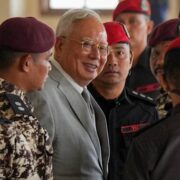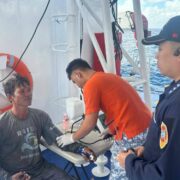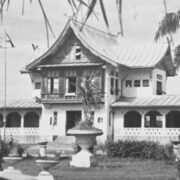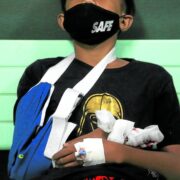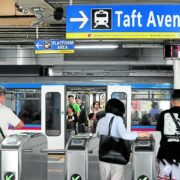Devotion fuels Cebu’s Sinulog
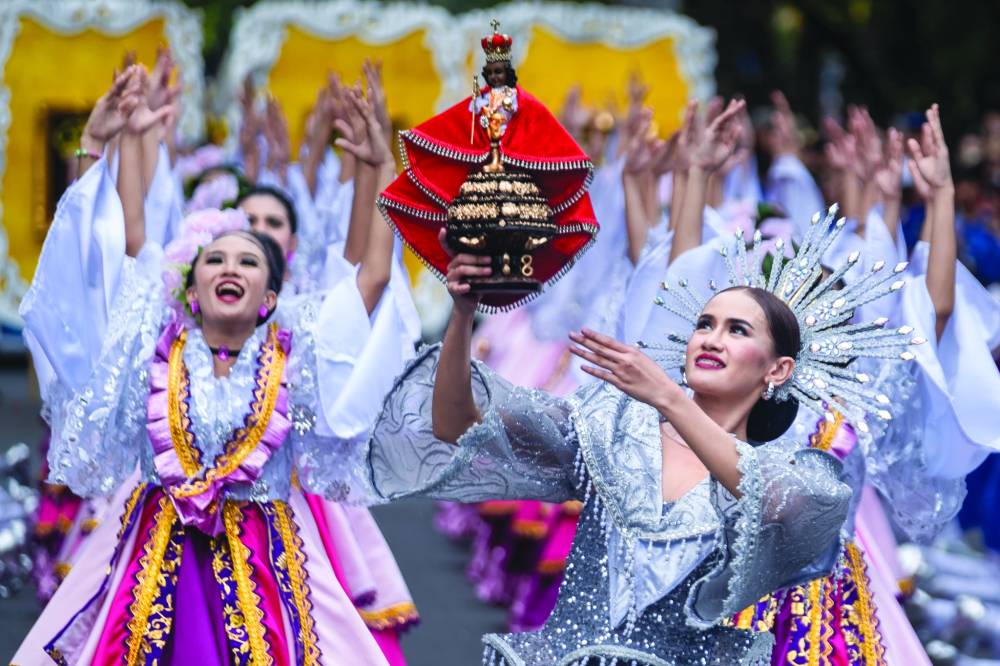
CEBU CITY—The streets are full, the drum beats are loud and the atmosphere is festive in the Queen City of the South today as it stages the Sinulog, considered among the grandest and most attended festivals in the country.
At least 45 dancing contingents—more than half compared to last year’s 18—are participating in this year’s event. Twelve groups come from other parts of the country with Luzon, the Visayas and Mindanao fully represented, while a group of performers from South Korea is also joining the festivities.
“They all come here to dance and venerate the Sto. Niño,” said Elmer Labella, executive director of the Sinulog Foundation Inc. (SFI).
Sinulog, which has been celebrated for 45 years, started as a ritual prayer and dance to the image of Sto. Niño (Holy Child Jesus) that was given as a baptismal gift by Portuguese explorer Ferdinand Magellan to Cebu’s Queen Juana in 1521.
The dance later became a cultural and religious celebration, drawing millions of people to Cebu every third Sunday of January.
The number of participants in this year’s Sinulog is the biggest since the COVID-19 pandemic hit the country in March 2020.
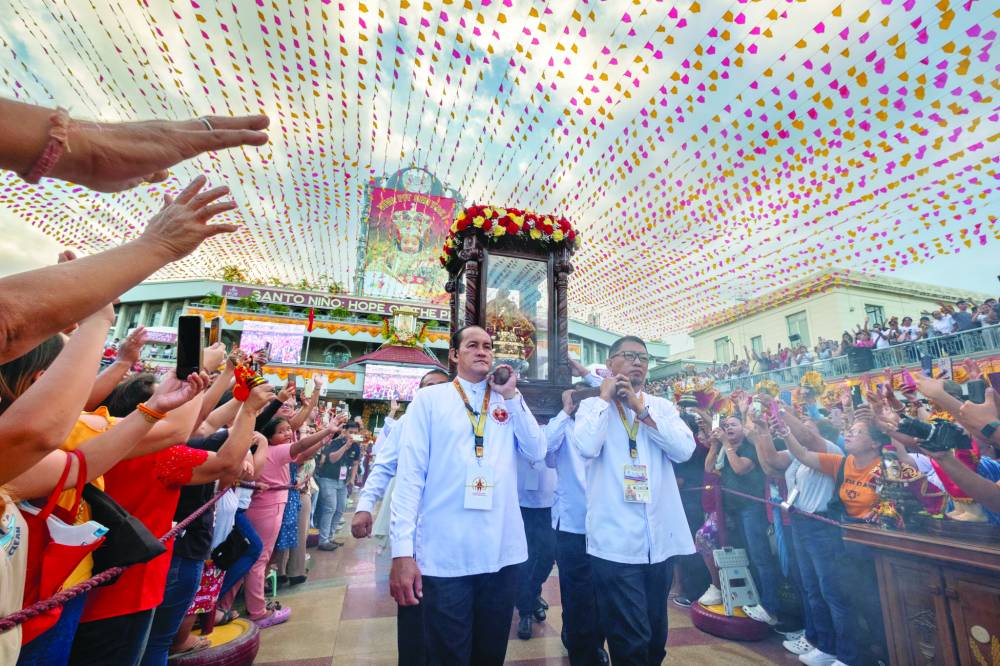
The festival was canceled in 2021 and 2022, when only videos of past Sinulog performances were presented online by the SFI. When health and travel restrictions were eased and Sinulog resumed in 2023, just 16 dancing contingents joined the grand parade and ritual showdown, followed by last year’s 18.
Labella believed that the continuing recovery from the pandemic and the return of the ritual showdown to its traditional venue, the Cebu City Sports Center, had prompted more groups to participate in the festival this year.
“The accessibility of the venue and the growing enthusiasm among locals [are factors here],” he said.
Last year, the city government, led by now dismissed Mayor Michael Rama, held the grand parade and ritual showdown at the South Road Properties for the second straight year to accommodate more revelers. But only a few contingents joined due to the muddy terrain at South Road Properties as well as the scorching heat because of the absence of trees and buildings there.
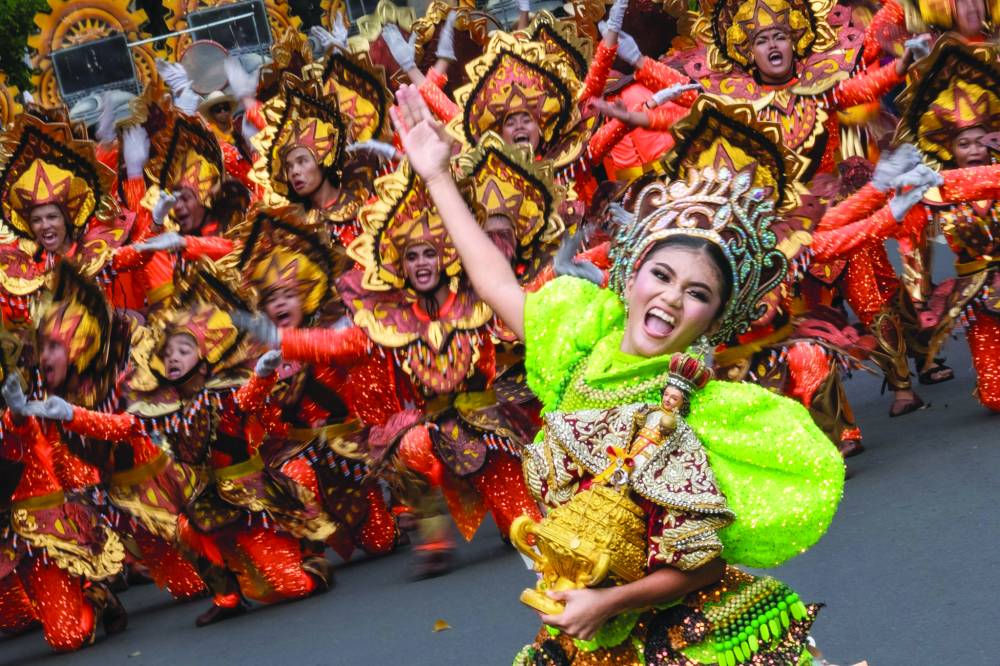
More participants
But Sinulog this year drew more participants—13 of which came from provinces and cities outside of Cebu.
Of the number, 11 are joining the dancing competition: Maytime Festival Bukluran Dance Troupe from Antipolo City; Tabaco College from Albay province; City of Kidapawan Performing Arts Guild from Cotabato; James L. Chiongbian National Trade School Performing Arts Guild from Sarangani province; Tribu Kamanting Performing Arts Guild Barug Dinagat Foundation from Dinagat Islands; Baile Filipina Dance Guild Inc. from Dipolog City; Kabilin Mindanaw from Davao Occidental; Hermosa Festival from Zamboanga City; Bakhaw Performing Arts Guild from Del Carmen, Siargao Island; Festival of Harvests from Bais City in Negros Oriental; and Sandurot Festival from Dumaguete City.
Bacolod City’s popular Masskara Festival and a group from South Korea are joining as guest performers.
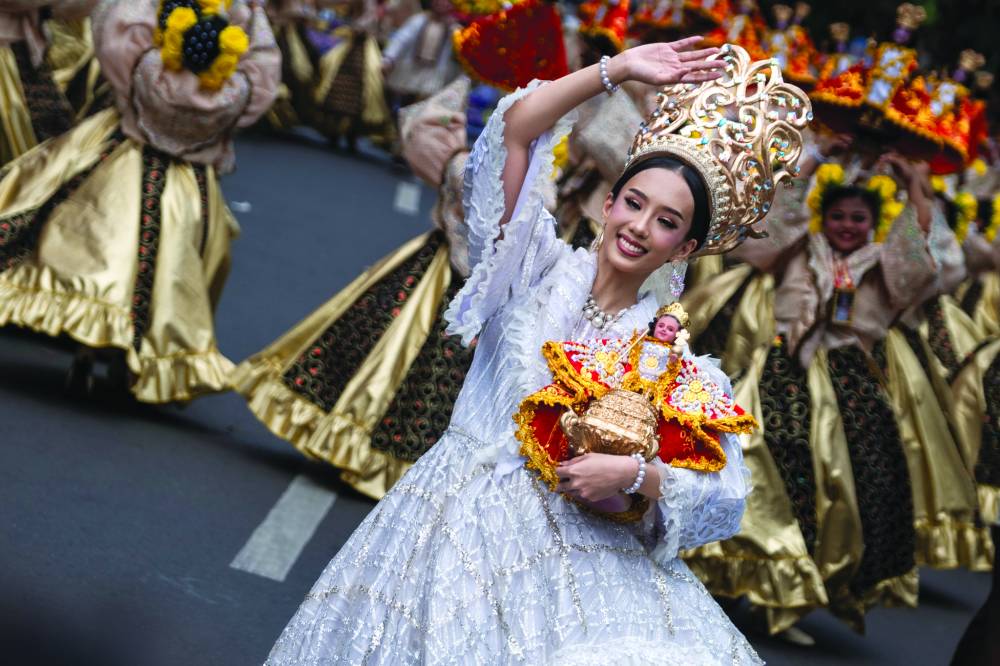
The city and provincial governments of Cebu are also offering dance presentations for the Sto. Niño.
The other dancing contingents taking part in the competition are from the different ares in the city and province of Cebu.
Grand winners in the two categories—“Free Interpretation” and “Sinulog-based” —will receive P3 million each. Cash prices of P2 million and P1.5 million await the first and second runners-up in each category.
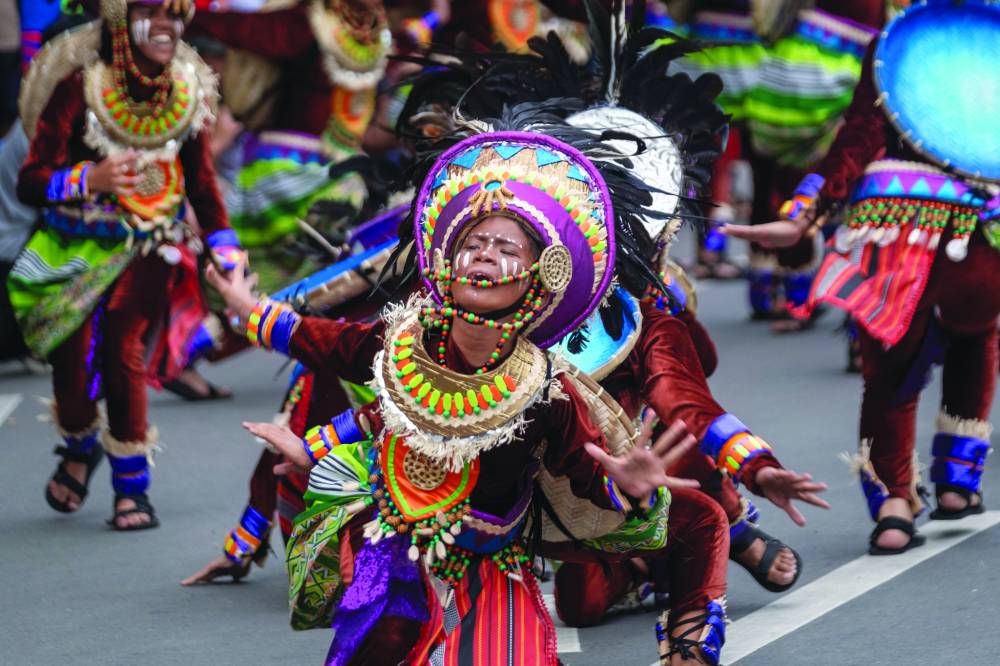
“We’re pushing for more diverse performances to entice visitors and keep them coming back,” Labella said.
Joy Pesquera, chair of the Cebu City Tourism Commission, said they expected an influx of tourists, including balikbayans (returning Filipinos) and visitors from countries like Russia, South Korea, Belarus and the United States.
“Tourism has significantly increased since the pandemic, and many hotels have reported high occupancy rates during the Sinulog,” she said, without citing updated figures.
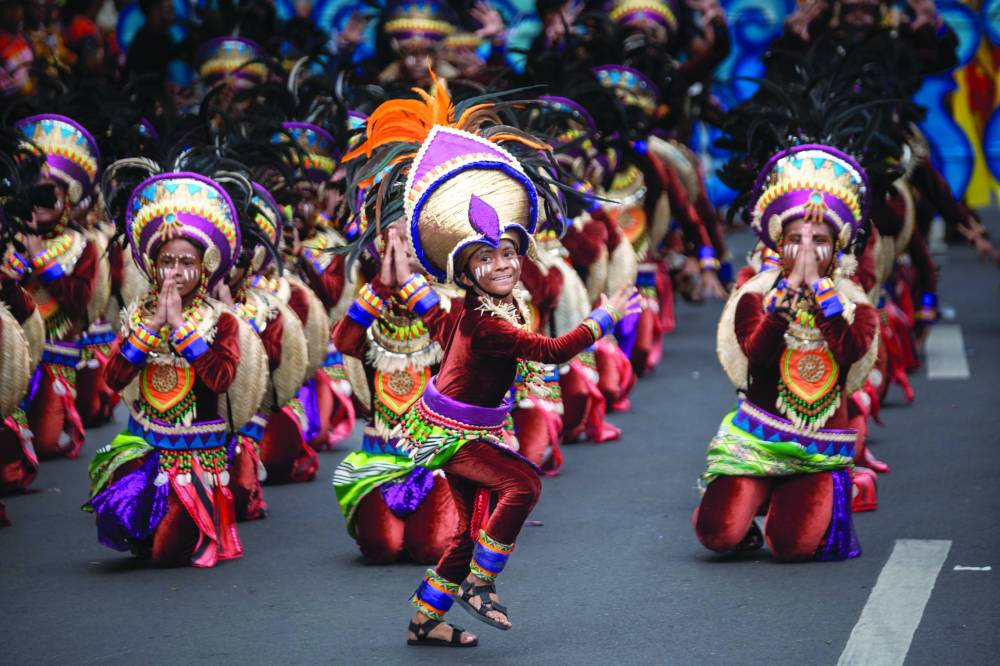
Measure of success
Pesquera believed the people’s devotion to the Sto. Niño fuels the Sinulog’s success.
“Sinulog is not just a festival. It’s a cultural and religious celebration that unites the people of Cebu,” she said.
“Without the Sto. Niño, without the devotion of the people, there’s no such thing as Sinulog. The devotion is really what drives the festival’s success and makes it the grandest in the country,” she added.
Sinulog’s original dance —one step forward and two steps backward—was patterned after the dance ritual called “Sinug,” a dance prayer performed before the image of the Sto. Niño.
Based on historical accounts, the Sinulog dance steps originated from Rajah Humabon’s adviser Baladhay who was found dancing in front of the image of the Sto. Niño right after being cured of his sickness.
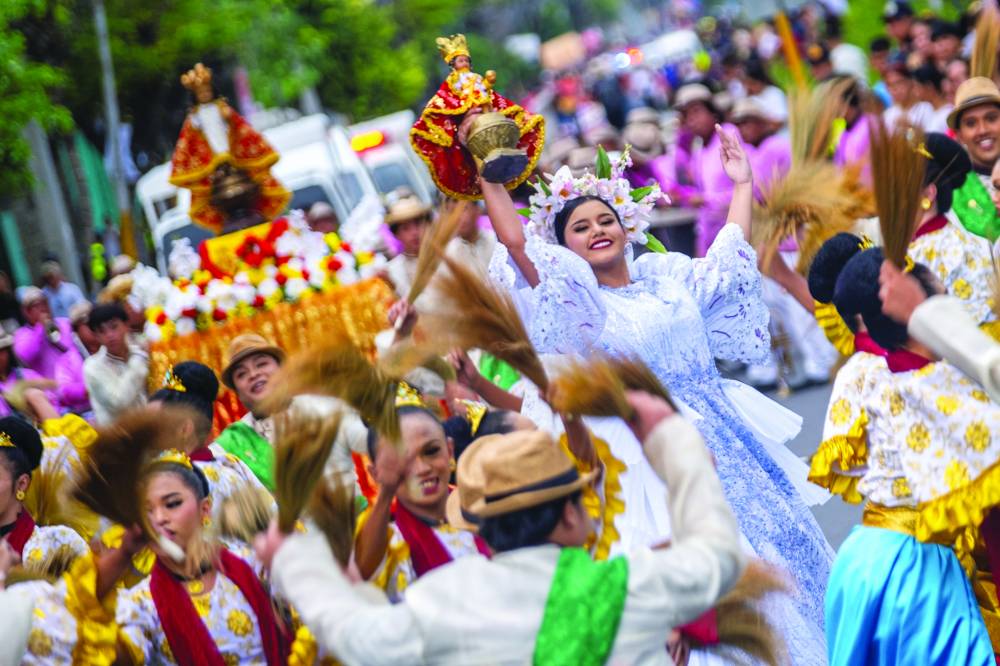
In 1980, the first Sinulog parade was organized by David “Boy” Odilao, then regional director of the Ministry of Sports and Youth Development, who tapped students as dancers and their teachers as choreographers.
Odilao, acknowledged as the “Father of the Sinulog” for elevating the ancient Cebuano prayer dance to a festival, said dancers then wore Filipiniana costumes and brought handkerchiefs and candles while dancing to the beat of the drum.
Now, the festival has become one of the biggest and grandest in the Philippines.
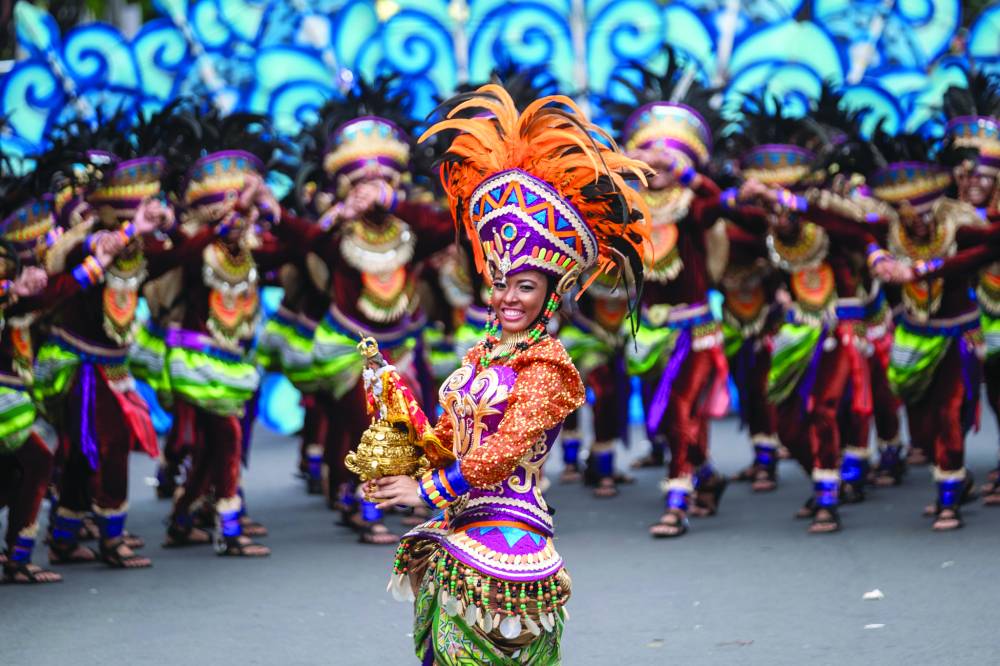
“Over the past 45 years, Cebu and Cebuanos all over the world, have been celebrating their great love and devotion to the Señor Sto. Niño through fervent prayers, beautiful dance offerings and joyful celebrations,” said Mia Singson-Leon, president of the Hotel, Resort and Restaurant Association of Cebu Inc.
“The sheer number of devotees alone is impressive and its ability to gather visitors wishing to take part grows with every passing year. For the majority of Cebuanos, I would say, it’s still really because of Sto. Niño, the child Jesus, our protector and savior,” she added.
Leon pointed out that occupancy rates of Cebu City hotels along and near the Sinulog routes were between 80 and 100 percent occupied based on hotel bookings, and about 60 to 70 percent for hotels away from the city center.
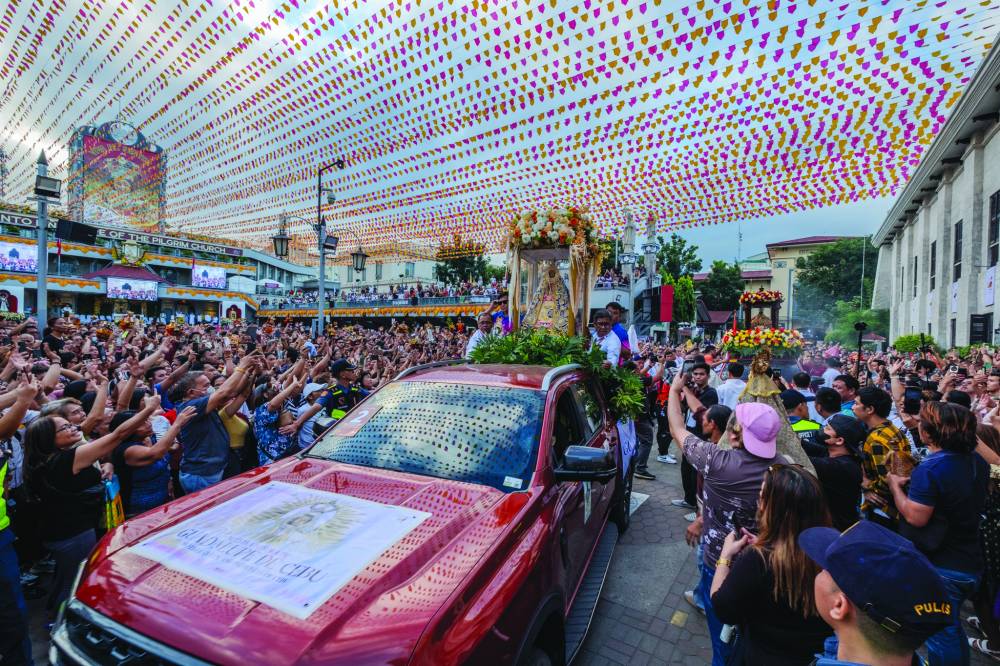
Leon said the Sinulog was anticipated to be the biggest in recent years due to several factors, among them a well-organized program with a variety of activities; clean, comfortable and convenient festival area; peace and order; good food and tour options; reasonably priced accommodations; and the genuine hospitality of Cebuanos.
Leon encouraged people to visit Cebu and be part of Sinulog.
“Tara na! Mag fiesta ta sa Sugbo! (Let’s go! Let’s celebrate Cebu’s fiesta). Together, let’s dance to the beat, let’s eat and shout ‘Pit Señor!’” she said. —WITH A REPORT FROM ADOR VINCENT MAYOL




